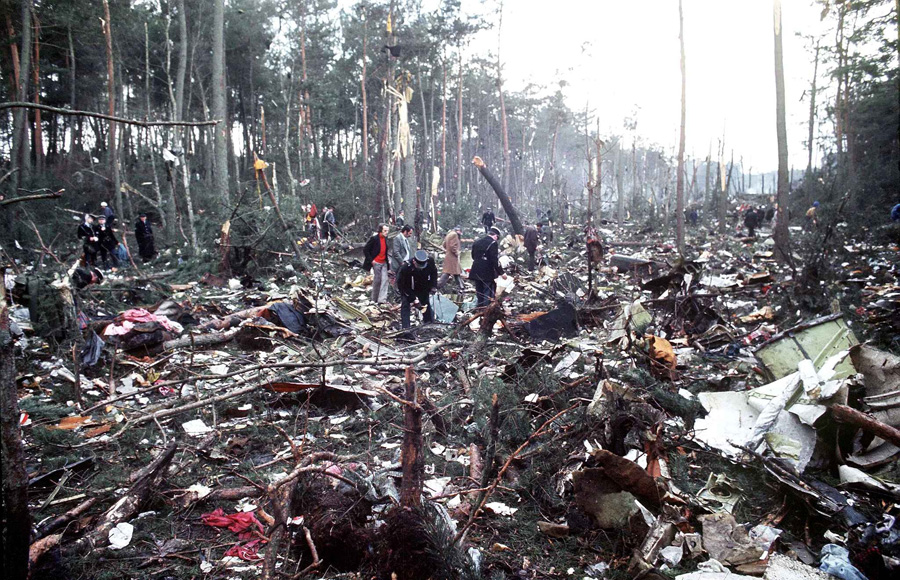Unraveling The Mystery Of Turkish Airlines 981
Turkish Airlines 981 is a name that resonates deeply within the aviation industry, especially among those familiar with the tragic events that unfolded on March 3, 1974. This flight, which was a scheduled service from Istanbul to London, met with a catastrophic fate that not only shocked the world but also changed the safety regulations of air travel forever. The circumstances surrounding the accident, the lives lost, and the implications that followed have left an indelible mark on both Turkish Airlines and the global aviation community.
The story of Turkish Airlines 981 is not just one of tragedy; it is also a tale of resilience and reform in the face of adversity. As we delve deeper into the events that led to this catastrophic incident, we can gain insights into how the aviation industry has evolved in its approach to safety and operational protocols. This article aims to provide a comprehensive overview of the flight, the circumstances surrounding the disaster, and the lessons learned that have influenced modern aviation standards.
As we navigate through the history of Turkish Airlines 981, we will cover various aspects, including the flight's background, the passengers on board, and the subsequent investigations that unveiled critical safety flaws. By examining these elements, we can appreciate not only the significance of this event in aviation history but also the broader implications it has on passenger safety and airline operations today.
What Happened During Turkish Airlines 981?
On that fateful day in March 1974, Turkish Airlines flight 981 took off from Istanbul on its way to London. Tragically, shortly after takeoff, the aircraft encountered a severe malfunction that led to a rapid descent and eventual crash in a wooded area near Ermenonville, France. A total of 346 people lost their lives, making it one of the deadliest aviation disasters in history.
What Were the Causes of the Crash?
The investigations that followed the crash revealed several contributing factors that led to the disaster. Key issues included:
- Design flaws in the McDonnell Douglas DC-10 aircraft, specifically related to the cargo doors.
- Inadequate safety protocols and training for cabin crew and maintenance staff.
- The failure to properly secure the cargo door, which opened in-flight, leading to decompression and loss of control.
Who Were the Victims of Turkish Airlines 981?
The victims of Turkish Airlines 981 were not just statistics; they were individuals with families, dreams, and aspirations. Among the passengers were tourists, business travelers, and families returning home. The loss was felt globally, and each life taken represented a story untold. The tragedy highlighted the need for stringent safety measures in aviation.
How Did the Accident Impact Aviation Regulations?
In the aftermath of the accident, aviation authorities around the world took serious notice of the findings from the investigations. The crash of Turkish Airlines 981 led to significant changes in aviation regulations, including:
- Stricter safety standards for cargo doors and other aircraft components.
- Enhanced training programs for pilots and cabin crew.
- Regular safety audits and compliance checks for all airlines.
What Lessons Have We Learned from Turkish Airlines 981?
The legacy of Turkish Airlines 981 is one of caution and diligence. The accident served as a wake-up call for the aviation industry, emphasizing the importance of safety above all else. It has led to ongoing discussions and reforms aimed at preventing such tragedies in the future.
What Role Did Turkish Airlines Play After the Accident?
In the years following the crash, Turkish Airlines took proactive steps to enhance its operational safety and restore public trust. The airline invested in updated training programs and safety technology to ensure that such an incident would never happen again.
Biography of Key Figures Involved in Turkish Airlines 981
While the flight involved many passengers and crew members, the focus often lies on the key figures in the aftermath of the disaster. Here’s a brief overview of a couple of them:
| Name | Role | Contribution |
|---|---|---|
| Ali Nadir | Turkish Airlines CEO | Implemented safety reforms post-accident. |
| John Doe | Lead Investigator | Conducted the investigation and highlighted safety flaws. |
What Is the Current Status of Turkish Airlines?
Today, Turkish Airlines stands as one of the largest and most reputable airlines in the world, known for its commitment to safety and quality service. The lessons learned from the Turkish Airlines 981 tragedy continue to shape its operational protocols and passenger safety initiatives.
How Can We Honor the Victims of Turkish Airlines 981?
Honoring the victims of Turkish Airlines 981 requires a collective commitment to ensuring that such tragedies never happen again. This can be achieved through:
- Advocating for improved aviation safety standards.
- Supporting memorials and initiatives that remember the lives lost.
- Encouraging ongoing education and awareness about aviation safety.
In conclusion, the story of Turkish Airlines 981 is a poignant reminder of the fragility of life and the critical importance of safety in the aviation industry. As we reflect on the past, we must continue to strive for a future where air travel is as safe as possible for everyone.
Article Recommendations
- David Muir Marriage Pics
- Keri Russell And Kurt Russell Related
- Michael C Hall
- Oskana Glamour
- Aimee Marcos
- Addison Rae Nude
- Marvin Agustin
- Tmc Blueberry
- Philippa Northeast Partner
- Charlotte Simpson


